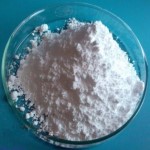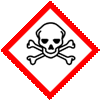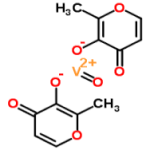Vanadyl Sulate & Vanadium BMOV or Bis(maltolato)oxovanadium Suppliers Exporters, Manufacturers
Vanadium BMOV or Bis(maltolato)oxovanadium
CAS Number: 38213-69-3 Suppliers Exporters, Manufacturers

Please visit Safety Data Sheet of Vanadium BMOV or Bis(maltolato)oxovanadium Manufacturers.
VanadiumBMOV or Bis(maltolato)oxovanadium(IV)
SDS, SAFETY DATA SHEET
MSDS SHEET 16-May-22
1. PRODUCT AND COMPANY IDENTIFICATION
Product Name & Other Names: Vanadium BMOV or Bis(maltolato)oxovanadium(IV) or Bis(3-hydroxy-2-methyl-4H-pyran-4-onato-O3,O4)oxovanadium.
CAS Number: 38213-69-3
EINECS EC Number: --
Relevant uses and uses advised against (if any): Laboratory and Industrial Manufacturing.
SUPPLIER: As per letterhead.
2. HAZARDS IDENTIFICATION
GHS, Globally Harmonized System Classification in accordance with 29 CFR 1910
Classification according to Regulation (EC) No 1272/2008
Acute toxicity, oral Category 3 (H301)
Labeling according to GHS & Regulation (EC) No 1272/2008
GHS Label Elements  Toxic |
Signal Words: Danger
Hazard statements:
H301 Toxic if swallowed.
Precautionary statements:
P261: Avoid breathing dust/fume/gas/mist/vapors/spray.
P264: Wash … thoroughly after handling.
P270: Do not eat, drink, or smoke when using this product.
P273: Avoid release to the environment.
P280: Wear protective gloves/protective clothing/eye protection/face protection.
P330: Rinse mouth.
P301+P310: IF SWALLOWED: Immediately call a POISON CENTER or doctor/physician.
P302+P352: IF ON SKIN: Wash with soap and water.
P305+P351+P338: IF IN EYES: Rinse cautiously with water for several minutes. Remove contact lenses, if present and easy to do. Continue rinsing.
3. COMPOSITION / INFORMATION ON INGREDIENTS
Product Name & Other Names: Vanadium BMOV or Bis(maltolato)oxovanadium(IV) or Bis(3-hydroxy-2-methyl-4H-pyran-4-onato-O3,O4)oxovanadium.
CAS Number: 38213-69-3
4. FIRST-AID MEASURES
Always seek medical attention after first aid measures are provided.
Eye Contact: Rinse immediately with plenty of water for 10 minutes at least. Contact a physician if symptoms persist.
Skin Contact: Wash thoroughly with soap and water; flush with plenty of water. Take off spoilt clothes. Contact physician if symptoms persist.
Ingestion: Wash the mouth with water; seek medical advice immediately.
Inhalation: Remove from exposure site to fresh air and keep at rest. Obtain medical advice.
5. FIRE-FIGHTING MEASURES
Extinguishing Media Recommended: Use water spray, alcohol-resistant foam, dry chemical, or carbon dioxide.
Non-Recommended: Avoid direct water jet on burning material.
Extinguishing Procedures: Closed containers may build up pressure at elevated temperatures. If possible, containers should be cooled with a water spray.
Special Hazards Arising from the Product: Toxic fumes and Carbon oxides.
Extinguishing Media Not recommended: Avoid using solid water jet as it may scatter the fire.
Special Information: In the event of a fire, wear full protective clothing and NIOSH-approved self-contained breathing apparatus with full face piece operated in the pressure demand or other positive pressure mode. At high temperatures under fire conditions, it may produce toxic or irritating fumes. Fire-extinguishing work is done from the windward and the suitable fire-extinguishing method according to the surrounding situation is used.
6. ACCIDENTAL RELEASE MEASURES
Personal precautions, protective equipment, and emergency procedures: Avoid breathing dust/fumes/gas/mist/vapors/spray. Use individual protective equipment (waterproof boots, suitable protective clothing, safety glasses, etc.). Do not approach facing the wind.
Environmental precautions: Do not let the product enter drains, soil, or water sources.
Methods and materials used for containment cleanup procedures and Storage: Do not inhale dust, vapors, mist, or gas. Avoid dust formation. Contain spilled material. Cover with an inert, non-combustible absorbent material, (e.g., sand, earth, diatomaceous earth, vermiculite). Use a shovel to put the material into a convenient waste disposal container. Finish cleaning by spreading water on the contaminated surface and allow to evacuate as per law. Avoid open flames or other sources of ignition.
7. HANDLING AND STORAGE
Precautions for safe handling: Apply according to good manufacturing and industrial hygiene practices. Ensure proper ventilation. In case of insufficient ventilation, wear suitable respiratory equipment. Wash thoroughly after handling. Do not drink, eat, or smoke while handling. Avoid contact with skin, eyes, and clothing. Minimize dust generation. Avoid breathing dust/fumes/gas/mist/vapors/spray. Use individual protective equipment (waterproof boots, suitable protective clothing, safety glasses, etc.).
Conditions for safe storage, including any incompatibilities: Store in cool, dry, and ventilated area away from heat sources and protected from sunlight in tightly closed original container. Keep air contact to a minimum. Store protected from heat, sparks and ignition sources and incompatible materials. Do not store with incompatible materials like strong oxidizing agents. Keep air contact to a minimum. Storage: Refrigerated. Short term shipping can be ambient.
Fire Protection: Keep away from ignition sources and naked flame.
8. EXPOSURE CONTROL
Exposure Limits: Not established.
Respiratory Protection: Avoid to breath directly on the product. Apply local ventilations when appropriate.
Ventilation System: A system of local and/or general exhaust is recommended to keep employee exposures as low as possible.
Personal Respirators (NIOSH Approved): For conditions of use where exposure to dust or mist is apparent and engineering controls are not feasible, a particulate respirator may be worn.
Skin Protection: Wear protective gloves and clean body-covering clothing.
Eye Protection: Use chemical safety goggles and/or full-face shield where dusting or splashing of solutions is possible. Maintain eye wash fountain and quick-drench facilities in work area.
Other Control Measures: Maintain good housekeeping in work area. Handle in accordance with good industrial hygiene and safety practice.
9. PHYSICAL AND CHEMICAL PROPERTIES
Appearance: Yellowish to grey-brown powder.
Odor: Not available.
Odor threshold: Not available.
pH: No data found.
Relative density: No data found.
Melting point/freezing point: No data found.
Initial boiling point and boiling range: 285C literature.
Flash point: 127C literature.
Auto-ignition temperature: No data found.
Decomposition temperature: No data found.
Upper/lower flammability or explosive limits: No data found.
Vapor pressure: No data found.
Vapor density: No data found.
Evaporation rate: No data found.
Flammability (solid, gas): No data found.
Partition coefficient: n-octanol/water: No data found.
Solubility(ies): Slightly soluble in water.
Viscosity: No data found.
Molecular Formula: C12H10O7V
Molecular Weight: 317.15
10. STABILITY AND REACTIVITY
Reactivity: It presents no significant reactivity hazards, by itself or in contact with water. Avoid contact with strong acids, alkali, or oxidizing agents.
Decomposition: Toxic fumes and Carbon oxides and unidentified organic compounds may be formed during combustion. Oxides of Vanadium will also form.
Conditions to Avoid: Strong heating, strong acids, alkali, or oxidizing agents.
11. TOXICOLOGICAL INFORMATION
LD 50 ORAL/RAT (mg/Kg): 220
Carcinogenic Effects: Not a reported carcinogen by IARC, NTP, ACGIH, OSHA.
Epidemiology: No data found.
Teratogenicity: No data found.
Reproductive Effects: No data found.
Mutagenicity: Mutagenic effects have occurred in experimental animals.
12. ECOLOGICAL INFORMATION
Toxicity to fish: No information available.
Persistence and Degradability: No data found.
Mobility: No data found.
Bioaccumulation/ Accumulation: No data found.
Results of PBT and vPvB assessment: No data found.
13. DISPOSAL CONSIDERATIONS
In accordance with local environmental laws. Avoid disposing into drainage or environment.
14. TRANSPORT REGULATIONS
DOT USA, TDG Canada & ADR/RID Europe:
UN Number: 2811
UN proper shipping name: TOXIC SOLID, ORGANIC, N.O.S. (No information available.)
Hazard Class: 6.1
Packing Group: III
IMDG/IMO & IATA/ICAO:
UN Number: 2811
UN proper shipping name: TOXIC SOLID, ORGANIC, N.O.S. (No information available.)
Hazard Class: 6.1
Packing Group: III.
15. REGULATORY INFORMATION
USA regulations:
US - California Proposition 65 - Carcinogens & Reproductive Toxicity (CRT): Not listed.
SARA 311/312: See section 2.
16. Other Information
DISCLAIMER: The information and recommendations set forth herein are presented in good faith and believed correct as of the date hereof. It is compiled from various sources, and it is not necessarily all inclusive nor fully adequate in every circumstance. In addition, these suggestions should not be confused with nor followed in violation of applicable laws, regulations, rules, or insurance requirements applicable. This MSDS sheet is intended only as a guide to the appropriate precautionary handling of the material by a professionally trained person using this product. Individuals receiving the information must exercise their independent judgment in determining its appropriateness for a particular purpose.

Please visit Hazard Statement of Vanadium BMOV or Bis(maltolato)oxovanadium Suppliers.
Vanadyl Sulate CAS Number 27774-13-6 or 123334-20-3 & Vanadium BMOV or Bis(maltolato)oxovanadium CAS Number 38213-69-3 Supplier Exporter, Manufacturer:
Annie Chemie P Ltd
Mumbai 4000010, INDIA
With Agents and offices in UAE, USA, Europe.
e-mail: info@anniechemie.com
Copyright and Usual Disclaimer is Applicable.
June 3, 2025
Exporters to USA, Canada, UK, Europe, UAE, Nigeria, Algeria, Turkey, Mexico, Brazil, Chile, Argentina, Australia, Dubai etc.
Perfection is made up of small things and that is a big thing.
